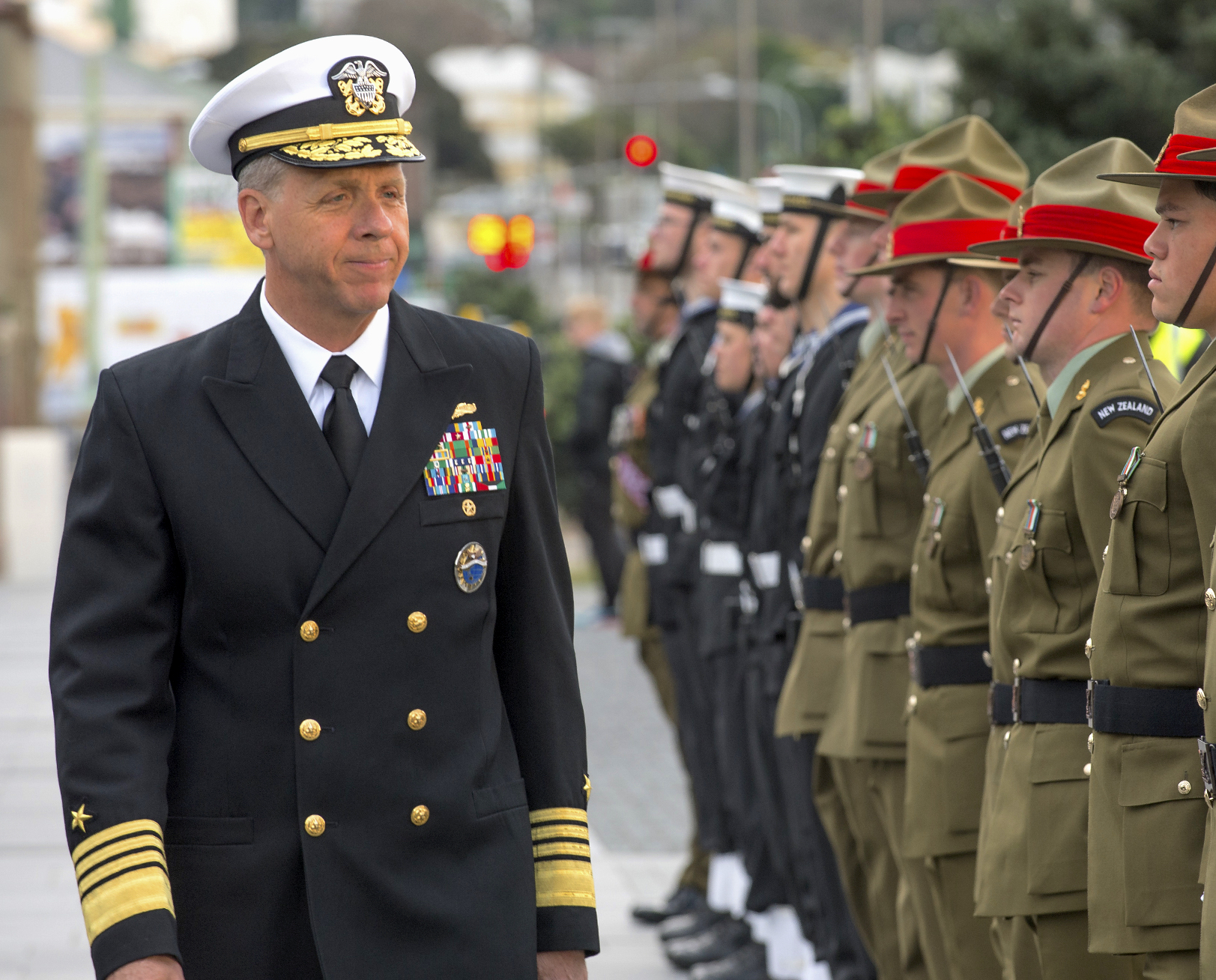
The head of U.S. forces in the Pacific has asked Congress to support several new initiatives to increase American military power in the region beyond what has been set aside in the Fiscal Year 2020 budget request, according to a March 22 letter obtained by USNI News.
U.S. Indo-Pacific Command commander Adm. Phil Davidson asked for support for new capabilities that include adding destroyers to the theater with AN/SPY-6 radars, expanding the Army’s Multi-Domain Task Force, create a new ballistic missile defense installation on Guam and infrastructure improvements to improve training in Hawaii, Alaska and Guam.
“The requests laid out in this letter set the conditions to ‘Regain the Advantage’ by providing a pragmatic and viable approach that shapes the security environment, reassures allies and partners, and dissuades potential adversaries from unilaterally attempting to change the international rules-based order,” Davidson wrote.
The Wall Street Journal first reported details from the letter on Wednesday.
The unclassified letter sent to the four congressional defense committees was part a reporting language laid out in the Fiscal Year 2019 National Defense Authorization Act, a defense official confirmed to USNI News on Thursday. While it does not specifically name China, the letter stresses the U.S. maintain the military advantage in the region where Beijing is expanding its naval and expeditionary capabilities.
“The 2018 National Defense Strategy (NDS) clearly prioritizes the Indo-Pacific theater and directs the military to enhance our military advantage,” read the letter. “The FY19 National Defense Authorization Act (NDAA) established the Indo-Pacific Stability Initiative (IPSI) to increase forward presence, improve capabilities, enhance posture in the Indo-Pacific, and leverage allies and partner nations through training and exercises.”
Specifically, the request included:
- Support the Army’s Multi-Domain Task Force formations in Asia. These units will be capable of conducting cross-domain missions including air, missile, and coastal defense with
state-of-the-art communications and precision-guided rockets, artillery, mortars, and missiles. - Support a permanent and persistent land-based Integrated Air and Missile Defense (IAMD) system and associated weapon delivery system on Guam.
- Support modest foreign military construction that provides the necessary capacity for willing partners to support U.S. and partner nations air and maritime operations and logistics from critical sites in South East Asia and Oceania.
- Accelerate the modernization of the Aegis DDG fleet with solid-state (AN/SPY-6) air search radars, to compete against the advanced threat of hypersonic and ballistic missiles.
- Support advancement and deployment of advanced space-based missile detection and
discrimination radars, as well as land-based systems. - Support necessary infrastructure and data network investment that facilitates multi-domain information sharing with allies and like-minded partners.
- Establish a Maritime Security Initiative (MSI) program for Oceania, modeled after the
successful MSI program operating in South East Asia. - Support necessary infrastructure improvements to evolve legacy training and exercise
facilities in Hawaii, Alaska, and Guam. - Support site assessments, planning and design, and follow-on military construction
investments that allow U.S. Indo-PACOM to reset the Joint Force’s posture within the Indo-Pacific and regain positional advantage over potential adversaries.
The unclassified portion of the request didn’t include any dollar amounts for the proposals. However, USNI News understands the letter was paired with several classified annexes that provided the committees more detail on proposed costs.
An Indo-PACOM spokesperson declined to elaborate on the letter when contacted by USNI News on Thursday.
Davidson’s letter joins several other unfunded requests from U.S. combatant commands that ask Congress for support for special initiatives that aren’t covered in the Pentagon’s $750 billion budget request.
“I appreciate your continued support and advocacy for those critical capabilities necessary to counter the pernicious actions of our near-peer rivals,” wrote Davidson.
While the services submit unfunded priorities list to Congress following the submission of the formal budget proposal, asks from the combatant commands are less regular.
This year, several sources confirmed to USNI News that U.S. European Command, U.S. Northern Command, U.S. Southern Command, U.S. Transportation Command, U.S. Special Operations Command and U.S. Missile Defense Command submitted unfunded lists to the committee.





